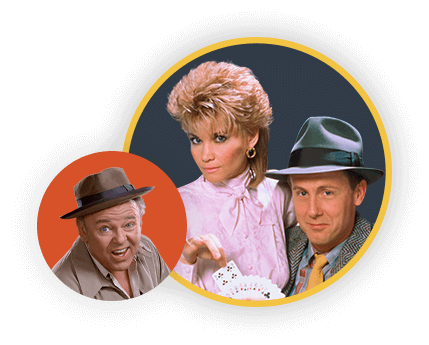Did you know the Magic 8 Ball was originally sold as a paperweight?

When you need some quick and sound advice and there's nobody around or left to turn to, there's always the good ol' Magic 8 Ball.
It gives you an honest answer, whether it's the one you're looking for or not. Sometimes, it'll even keep secrets, like "Better not tell you now," or "Ask again later."
The simple genius of Magic 8 Ball is what has kept it relevant for over a half-century. The enlarged billiards ball-looking toy is a sphere, with a flat bottom. In it sits a "20-sided plastic polyhedron that floats in diluted liquid," per Museum of Play. Each side of the polyhedron offers an answer to a yes or no question. Of course, some users ask direct and simple questions, perhaps about the future, while others ask complex questions for simple answers.
The product has been used to decide arguments and even predict outcomes for sporting events. Several newspapers have used the toy in conjunction with their respective pre-season predictions, either agreeing with the device or explaining why a team would do better or worse than the answer Magic 8 Ball gives.
For example, nearly an entire article in a 2006 Livingston County Daily Press and Argus newspaper centers around asking the 8 Ball sports-related questions. One question being, "Will the Detroit Tigers win more games in October than the Detroit Lions?" The Magic 8 Ball said "Signs point to yes." The writer of the article responded, "I knew Magic 8-Ball wouldn't let me down!"
Before it became a children's toy, game-night accessory and the fortune-telling device we know and love today, there was a much more boring purpose for Magic 8 Ball when it was created. It was meant to brighten up the workspace and hold your papers down. Yes, it was meant to simply be a paperweight.
The son of a clairvoyant, Albert Carter found the fortune-telling industry amusing. In 1944, Carter created what was called the Syco-Seer. It was a "liquid-filled tube, divided in the center. On each end, a clear window allowed a view of the worded dice Carter had placed in each half," Museum of Play states. When the Syco-Seer was turned, one die appeared through the liquid and revealed an answer.
It sounds very similar to the Magic 8 Ball we know today. A few years later, Carter's brother-in-law, Abe Bookamn, saw new potential for a slimmed-down version of the device. A rebranding saw the device transform into a crystal ball. This new spherical design caught the eye of "Brunswick Billiards who, in 1950, were on the lookout for a fun item to use as a potential giveaway to promote their Chicago-based billiards company."
This time, a redesign morphed this fortune-telling device into the design we know today. After the promotion with the Billiards company ended, Bookman decided to keep the spherical design, and keep the reference to a billiards ball. He deemed a paperweight would best fit the new design's purpose, and marketed it as such.
It wasn't until "he noticed the 8 Ball's popularity among children that Bookman decided to re-market the product as a toy. With this, the Magic 8 Ball quickly found its footing."
While today, a Magic 8 Ball is a toy that can be used effectively as a paperweight, at one point in time, the roles were reversed. No matter how it started, if you asked a Magic 8 Ball if it's had a successful run since its inception in 1946, the answer should be:
"Without a doubt."




